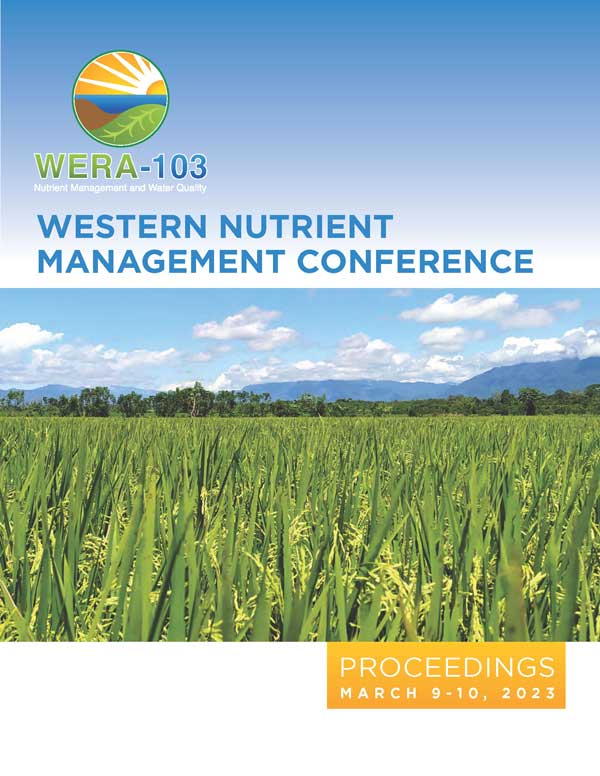Download the Conference Proceedings
Proceedings
Authors
| Filter results2 paper(s) found. |
|---|
1. Chloride Effects on Nitrogen Uptake in Potato ProductionPotassium (K) can be supplied by potassium chloride (KCl) or sulfate (K2SO4) salts. Past research has shown that potatoes can take up and accumulate large amounts of chloride (Cl). Plant uptake of Cl can sometimes reduce petiole nitrate-N (NO3-N) concentration and it may have other effects on potato tuber yield and quality. In contrast, sulfate-S (SO4-S) typically does not compete strongly with NO3-N for plant uptake. This research was designed to evaluate the effect of Cl application on petiole... D. Sullivan, S. Light, D. Horneck |
2. Improved Small Grain Nitrogen Use Efficiency with California Site-specific Decision SupportSmall grains are grown throughout the state of California (CA) on approximately 500,000 acres annually. They are generally fall-sown and grown during the winter months when most precipitation occurs. Because precipitation and irrigation patterns vary across CA and there is a strong interaction between total water and plant available nitrogen (N), determining fertilizer N application recommendations is particularly challenging in this cropping system. With recent fertilizer price volatility,... N. Clark, M. Lundy, T. Nelsen, M. Leinfelder-miles, S. Light, G. Galdi, T. Getts, K. Mathesius |
